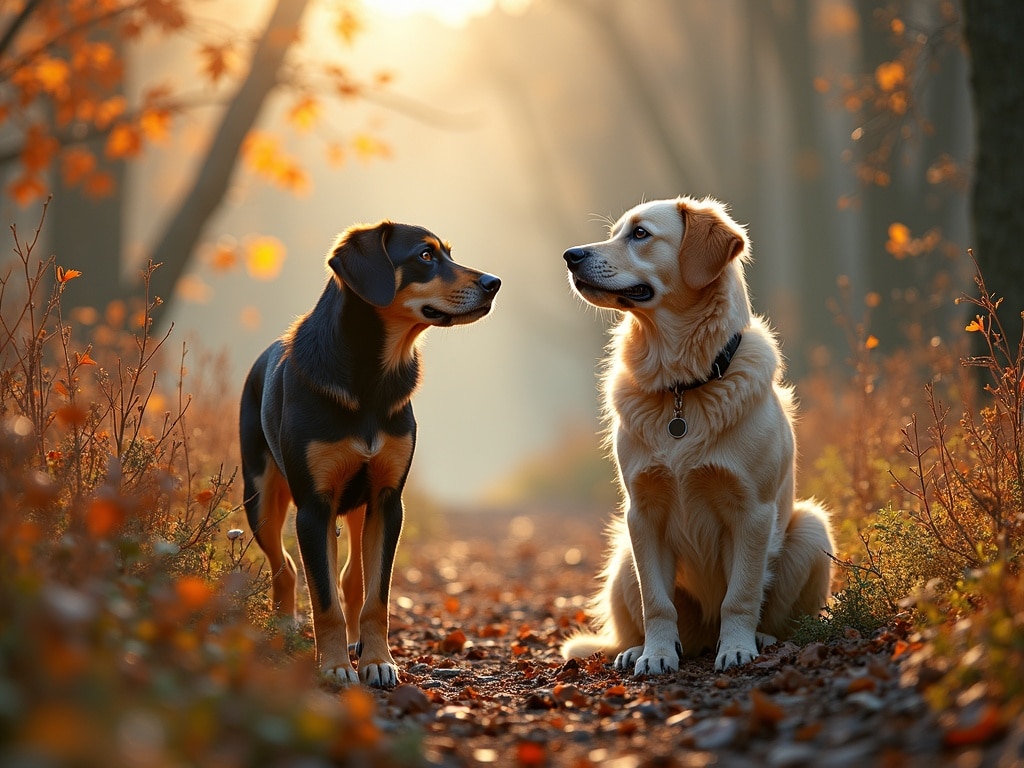Is Your Dog Ready? The Hunter's Checklist for Pre-Season Training
The crisp air, the vibrant colors of changing leaves, the thrill of the hunt – these are the hallmarks of hunting season. But before you and your canine companion venture into the great outdoors, ask yourself: Is your dog truly ready? Pre-season training isn't just about sharpening existing skills; it's about building a foundation of obedience, stamina, and focus that ensures a safe, successful, and enjoyable experience for both of you. This comprehensive checklist will guide you through the essential elements of preparing your hunting dog for the challenges and excitement that lie ahead.
Essential Commands: The Foundation of Dog Training for Hunting
Think of commands as your dog's operating system in the field. They're not just polite requests; they're crucial tools for control, safety, and effective teamwork. Mastering these essential commands is the first step in effective dog training for hunting.
- Here or Come: The most important command of all. This should mean an immediate and enthusiastic return, regardless of distractions. Practice with high-value rewards and varying distances.
- Sit and Stay: Fundamental for maintaining control in various situations, from waiting patiently in a blind to remaining calm during a pause in the hunt.
- Heel: Essential for navigating through tricky terrain or maintaining a controlled pace. Focus on maintaining a consistent position beside you. You may find this article, The Pulling Paradox: Understanding and Correcting Your Dog's Leash Habits helpful if your dog has leash-walking issues.
- No: A universal correction command. Use it sparingly but consistently to discourage unwanted behaviors like chasing non-target animals or scavenging.
- Fetch or Retrieve: If your hunting involves retrieving, this command is obviously paramount. We'll delve deeper into retrieving skills later.
- Kennel: Training your dog to enter their crate or kennel on command is beneficial is many situations.
Building Stamina and Endurance: Preparing for the Long Haul
Hunting isn't a leisurely stroll; it demands bursts of intense activity followed by periods of sustained effort. Just like human athletes, dogs need to build stamina to perform their best. Here's how to increase your dog's endurance, as part of your overall dog training for hunting program:
- Start Slow: Don't jump into intense workouts immediately. Begin with gradually increasing the length and intensity of your walks or runs.
- Vary the Terrain: Incorporate hills, fields, and wooded areas into your training to challenge different muscle groups.
- Interval Training: Alternate between high-intensity bursts (like sprints or retrieves) and periods of rest or low-intensity activity.
- Swimming: A fantastic low-impact exercise that builds overall fitness and strengthens muscles.
- Monitor Your Dog: Pay close attention to your dog's breathing, gait, and overall energy levels. Stop if they show signs of fatigue or overheating.
Field Exposure: Simulating the Real Deal
Book smarts aren't enough; your dog needs practical experience in environments similar to those they'll encounter during the hunt. This crucial step prepares them for the sights, sounds, and smells they'll experience in the field. As you delve into dog training for hunting scenarios, keep these tips in mind:
- Controlled Environments: Start with familiar, relatively distraction-free areas and gradually introduce more challenging environments.
- Introduce Game Scents: Use training scents to familiarize your dog with the smells of the animals you'll be hunting.
- Simulate Hunting Scenarios: Create mock scenarios, such as flushing birds or tracking game, to practice specific skills.
- Vary the Weather: Train in different weather conditions (within safe limits) to acclimate your dog to the elements. Pay mind to local poisonous plants Is Your Garden a Death Trap? Toxic Plants Every Dog Owner Should Know could prove to be problematic for your dogs.
Proofing Against Distractions: Maintaining Focus Under Pressure
The hunting environment is filled with distractions: tempting scents, intriguing sounds, and unexpected movements. Your dog needs to be able to maintain focus on the task at hand, even when faced with these temptations. This proofing process is essential for reliable dog training for hunting.
- Start with Controlled Distractions: Begin with mild distractions and gradually increase their intensity.
- Reinforce Commands: Consistently reinforce commands, even when distractions are present. Use positive reinforcement, such as praise and treats, to reward focused behavior.
- Practice Leave It: Teach your dog a leave it command to discourage them from picking up or chasing unwanted objects.
- Introduce Other Animals: Expose your dog to other animals, such as livestock or other dogs, in a controlled setting to teach them to ignore them during training.
Gearing Up: Essential Training Equipment
Having the right equipment can make pre-season training more effective and enjoyable for both you and your dog. Consider these essential items:
- Training Collar: Choose a collar that fits properly and is appropriate for your dog's size and breed.
- Long Lead or Check Cord: Useful for practicing recall and off-leash control.
- Whistle: A whistle can be a highly effective tool for signaling commands at a distance.
- Training Dummies or Birds: Depending on the type of hunting you do, you'll need appropriate training dummies or birds to practice retrieving.
- First-Aid Kit: Be prepared for minor injuries with a well-stocked first-aid kit.
- Water and Food Bowls: Keep your dog hydrated and fueled during training sessions.
Retrieving Skills: From Basics to Advanced Techniques
For many types of hunting, retrieving is a crucial skill. Here's how to introduce and reinforce retrieving skills in your dog:
- Start with Soft Objects: Begin with soft objects like bumpers or canvas dummies to avoid damaging your dog's mouth.
- Positive Reinforcement: Use plenty of praise and rewards to encourage enthusiastic retrieves.
- Teach a Proper Hold: Train your dog to hold the object gently but firmly without dropping it.
- Introduce Feathered Game: Gradually introduce real or artificial birds once your dog has mastered the basics.
- Water Retrieves: If you'll be hunting waterfowl, practice retrieving in water to acclimate your dog to swimming with a dummy or bird.
Overtraining: Recognizing the Signs and Preventing Burnout
Pushing your dog too hard can lead to overtraining, which can result in injuries, decreased performance, and a loss of enthusiasm. Learn to recognize the signs of overtraining and take steps to prevent it:
- Reduced Energy Levels: A noticeable decrease in energy or enthusiasm during training sessions.
- Increased Stiffness or Soreness: Signs of muscle fatigue or discomfort.
- Decreased Appetite: A loss of interest in food.
- Changes in Behavior: Increased irritability, anxiety, or reluctance to train.
To prevent overtraining, be sure to:
- Provide Adequate Rest: Allow your dog plenty of rest between training sessions.
- Vary the Intensity: Alternate between high-intensity and low-intensity workouts.
- Listen to Your Dog: Pay attention to your dog's body language and adjust your training accordingly.
- Consult Your Veterinarian: If you suspect your dog is overtrained, consult your veterinarian for advice.
Gunfire Acclimation: Preparing for Loud Noises
The sound of gunfire can be frightening for dogs, potentially leading to gun shyness. It's crucial to acclimate your dog to loud noises gradually and positively:
- Start with Distant Sounds: Begin with recordings of gunshots played at a low volume.
- Associate with Positive Experiences: Pair the sounds with positive experiences, such as treats or playtime.
- Gradually Increase Volume: Slowly increase the volume of the gunshots over time.
- Progress to Real Gunfire: Eventually, introduce real gunfire at a safe distance. Have someone else fire the gun while you work with your dog on basic commands.
- Never Force It: If your dog shows signs of fear or anxiety, back off and proceed more slowly.
Troubleshooting: Common Training Challenges
Even with the best preparation, you may encounter challenges during dog training for hunting. Here's how to address some common issues:
- Lack of Focus: If your dog struggles to maintain focus, try shortening training sessions, reducing distractions, and using higher-value rewards.
- Refusal to Retrieve: If your dog refuses to retrieve, make the activity more fun and rewarding. Use positive reinforcement and avoid punishment.
- Gun Shyness: If your dog develops gun shyness, consult with a professional dog trainer for guidance.
- Excessive Barking: If your dog barks excessively, try to identify the trigger and address it through training and desensitization.
Nutrition for Success
Hunting dogs in training have elevated nutritional needs. Providing the right diet is crucial for supporting their energy levels, muscle development, and overall health.
- High-Quality Dog Food: Choose a dog food that is specifically formulated for active or working dogs. These foods typically have a higher protein and fat content.
- Adjust Portions: Monitor your dog's weight and adjust their food portions accordingly. You may need to increase their food intake during periods of intense training.
- Provide Fresh Water: Ensure your dog always has access to plenty of fresh, clean water, especially during and after training sessions. See deer hunting schedule by state.
Final Thoughts
Pre-season dog training for hunting is an investment in safety, success, and the bond between you and your canine companion. By following this checklist and tailoring your approach to your dog's individual needs and abilities, you'll be well-prepared to tackle the challenges and rewards of the upcoming hunting season. Remember to be patient, positive, and consistent, and most importantly, enjoy the journey with your four-legged hunting partner.


